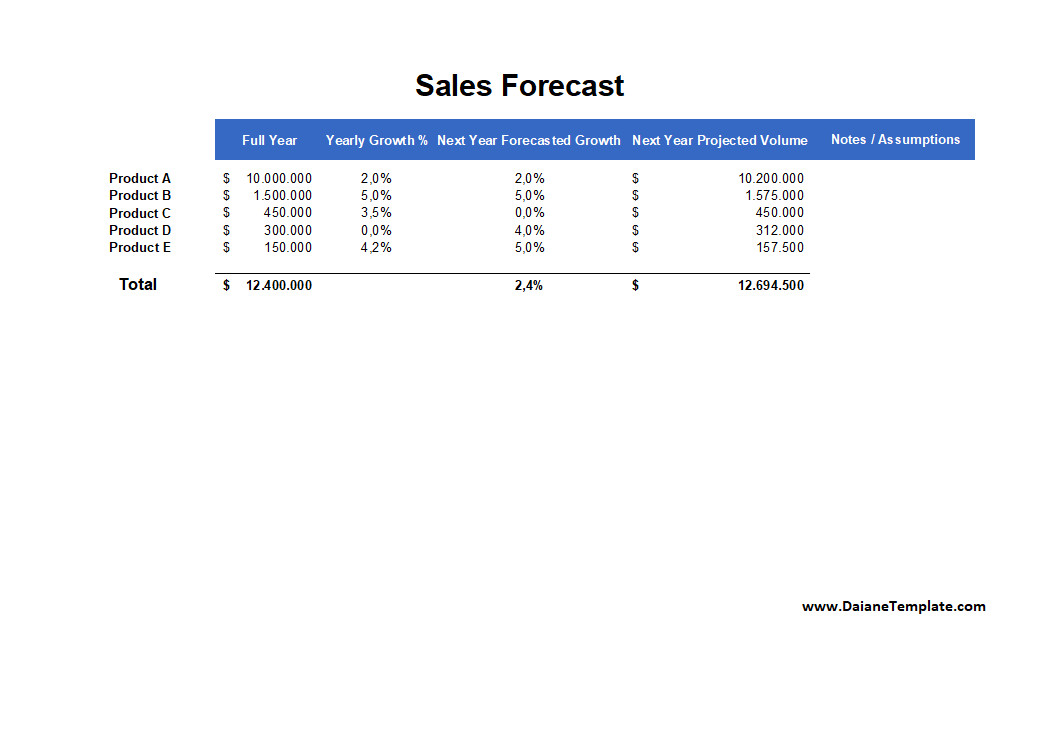Sales Forecasting is a crucial aspect of business operations that involves predicting future revenue to facilitate strategic planning, financial management, and informed decision-making across the organization. By accurately forecasting sales, companies can allocate resources effectively, optimize production, manage inventory levels, set budgets, and align departments to meet market demands.

Ultimately, sales forecasting serves as a tool for performance benchmarking and risk mitigation, providing businesses with a data-driven picture of expected sales to guide their operations.
What is Sales Forecasting?
Sales forecasting is the process of estimating future sales performance based on historical data, market trends, and other relevant information. It involves analyzing past sales figures, customer behavior, market conditions, and external factors to predict future revenue accurately.
By leveraging sales forecasting, businesses can make informed decisions, set realistic goals, and develop strategies to achieve sustainable growth.
Why is Sales Forecasting Important?
Strategic Planning
Sales forecasting is essential for strategic planning as it helps businesses set realistic goals, develop growth strategies, and allocate resources effectively. By understanding their future revenue potential, companies can make informed decisions about investments, expansions, and market positioning.
Financial Management
Accurate sales forecasting is crucial for financial management as it enables businesses to manage cash flow, budget effectively, and make informed investment decisions. By predicting future revenue, companies can optimize their financial resources and minimize the risk of cash flow shortages.
Inventory and Staffing
Sales forecasting plays a critical role in inventory and staffing management by helping businesses optimize their production schedules, inventory levels, and staffing requirements to meet anticipated demand. By aligning production with sales forecasts, companies can avoid overstocking or stockouts and improve operational efficiency.
Performance Benchmarking
Sales forecasts serve as a benchmark for performance evaluation, allowing businesses to compare actual sales results with projected figures. By analyzing the variance between forecasted and actual sales, companies can identify areas of improvement, adjust their strategies, and enhance their overall performance.
Risk Mitigation
Sales forecasting enables businesses to identify potential risks and uncertainties in their sales performance, allowing them to develop contingency plans and mitigation strategies. By anticipating market fluctuations, changing consumer behavior, and external factors, companies can proactively address risks and minimize their impact on operations.
What to Include in a Sales Forecast?
Historical Sales Data
When creating a sales forecast, it is essential to analyze historical sales data to identify trends, patterns, and seasonality in sales performance. By understanding past sales patterns, businesses can make more accurate projections for future revenue.
Market Research
Market research plays a crucial role in sales forecasting as it provides insights into market conditions, customer preferences, competitive dynamics, and industry trends. By conducting thorough market research, businesses can make informed decisions about pricing, product positioning, and market opportunities.
Product or Service Analysis
Analyzing the performance of individual products or services is essential for creating a detailed sales forecast. By evaluating the sales trends, product lifecycle, and customer demand for each product or service, companies can create more accurate projections for future sales.
Sales Channels
Consideration should be given to different sales channels, such as e-commerce, retail, direct sales, and distribution networks, when creating a sales forecast. By analyzing sales data from various channels, businesses can optimize their sales strategies, allocate resources effectively, and maximize revenue potential.
External Factors
External factors, such as economic conditions, industry trends, technological advancements, and regulatory changes, can have a significant impact on sales performance. When creating a sales forecast, it is essential to consider these external factors and their potential influence on future revenue.
How to Create a Sales Forecast
Gather Data
The first step in creating a sales forecast is to gather relevant data, including historical sales figures, market research reports, customer data, and other information that may impact sales performance. By collecting comprehensive data, businesses can create a more accurate forecast.
Analyze Trends
Once the data is gathered, it is essential to analyze trends, patterns, and seasonality in sales performance. By identifying past sales trends and understanding their implications for future revenue, companies can make more informed projections.
Set Goals
Based on the analysis of historical data and market trends, businesses should set realistic sales targets and goals for the future. By establishing clear objectives, companies can focus their efforts, allocate resources effectively, and measure their performance against predefined metrics.
Monitor and Adjust
Sales forecasting is an ongoing process that requires continuous monitoring and adjustment based on actual sales performance and new information. By regularly reviewing the forecast and updating it as needed, businesses can adapt to changing market conditions, optimize their strategies, and improve accuracy.
Tips for Successful Sales Forecasting
Use Multiple Methods
To create a more accurate sales forecast, consider using a combination of forecasting methods, such as trend analysis, regression models, qualitative assessments, and expert judgment. By leveraging multiple methods, businesses can reduce uncertainty and improve the accuracy of their projections.
Involve Key Stakeholders
Collaborate with key stakeholders, including sales teams, marketing professionals, finance experts, and senior management, when creating a sales forecast. By involving different departments and individuals in the forecasting process, companies can gather diverse insights, improve accuracy, and ensure alignment across the organization.
Review and Update Regularly
Regularly review and update the sales forecast based on new data, market trends, and changing business conditions. By monitoring actual sales performance, comparing it to the forecast, and adjusting projections as needed, businesses can improve the accuracy of their predictions and make informed decisions.
Consider Different Scenarios
Develop scenarios for best-case, worst-case, and most likely sales outcomes to prepare for different possibilities. By considering various scenarios and their potential implications for revenue, companies can develop contingency plans, mitigate risks, and improve their overall readiness to respond to changing market conditions.
Free Sales Forecast Template
In conclusion, a Sales Forecast helps you project future revenue, analyze trends, and make informed business decisions. It’s an essential tool for managing budgets, setting goals, and planning for growth.
Stay ahead of the competition—download our Sales Forecast Template and start predicting your sales with confidence!
Sales Forecast Template – EXCEL